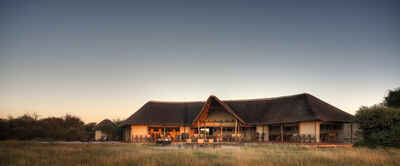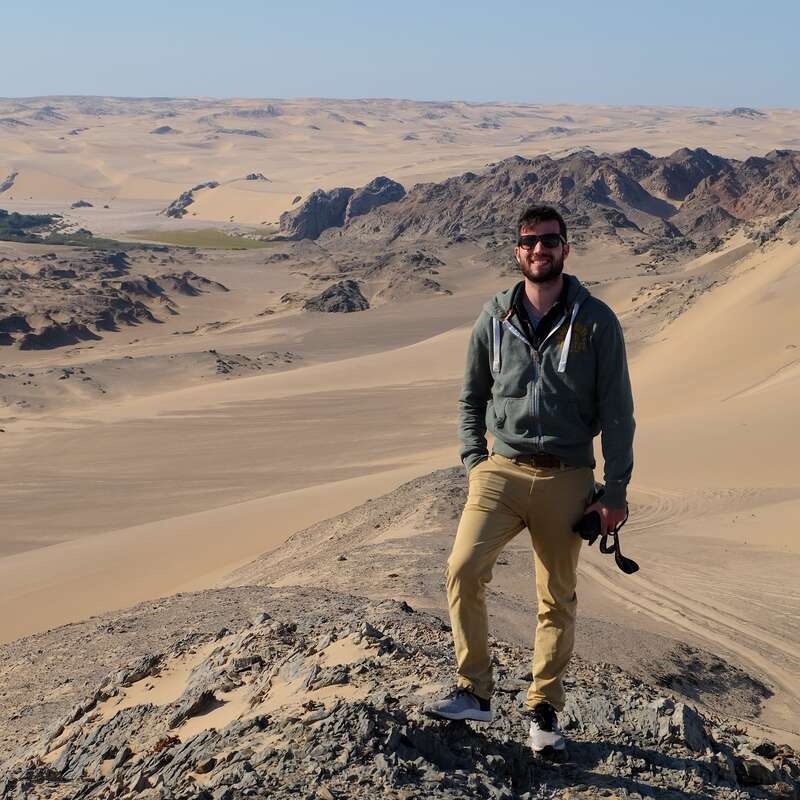About Nxai Pan Camp
Nxai Pan Camp was opened in February 2009 and is still the only permanent camp within Nxai Pan National Park.
It faces east over the open plains of Nxai Pan, a grass-covered fossil lake-bed that was once part of the great lake that covered central Botswana. In the 'green season', between about late November and April, this area attracts large numbers of plains game, especially zebra.
Nxai Pan Camp is modern and spacious, run by a fantastic, cohesive team who are passionate about the area they work in and offer a genuinely warm welcome. Although the game can be erratic, game drives from camp can yield great summer game-viewing and birdwatching opportunities – and the camp is also well situated to visit the renowned Baines’ Baobabs.
Our view
Nxai Pan Camp is modern and spacious, run by a fantastic, cohesive team who are passionate about the area they work in and offer a genuinely warm welcome. Although the game can be erratic, game drives from camp can yield great summer game-viewing and birdwatching opportunities – and the camp is also well situated to visit the renowned Baines’ Baobabs.
Accommodation
9 chalets
Children
Best for 6+
Open
All year
Activities

4WD Safari

Birdwatching

Cultural excursion

Guided walking safari

Private activities
Traveller reviews of Nxai Pan Camp
38 real, un-edited reviews from Expert Africa's travellers.
Arrived 15 Mar 2025, 3 nights
"Nxai Pan Camp review"
Overall rating: Excellent
Arrived 28 Feb 2025, 3 nights
"Nxai Pan Camp review"
Overall rating: Good
Arrived 17 Feb 2025, 3 nights
"Nxai Pan Camp review"
Overall rating: Good
Arrived 16 Jan 2025, 3 nights
"Nxai Pan Camp review"
Overall rating: Excellent
Arrived 16 Jan 2025, 3 nights
"Nxai Pan Camp review"
Overall rating: Excellent
Arrived 20 Mar 2023, 3 nights
"Nxai Pan Camp review"
Overall rating: Excellent
Arrived 3 Apr 2022, 3 nights
"Nxai Pan Camp review"
Overall rating: Good
Arrived 25 Feb 2022, 2 nights
"Warm welcome in Nxai Pan"
Overall rating: Excellent
Arrived 5 Jan 2020, 3 nights
"Great Stay During the Rainy Season"
Overall rating: Excellent
Arrived 21 Jan 2019, 3 nights
"Enjoyed this camp"
Overall rating: Excellent
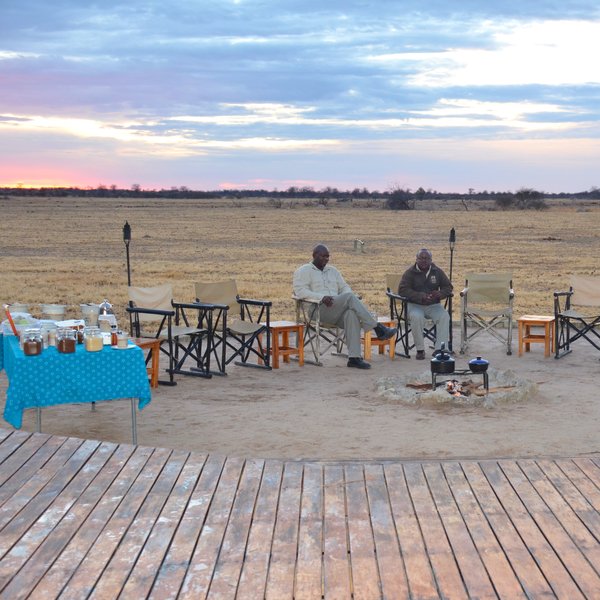
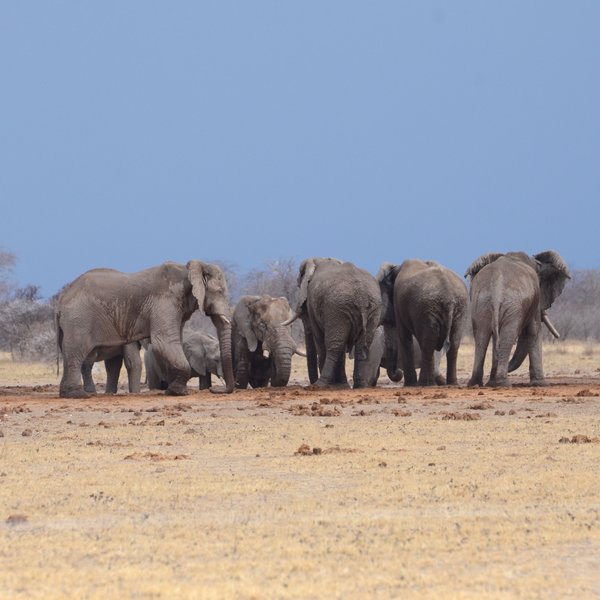
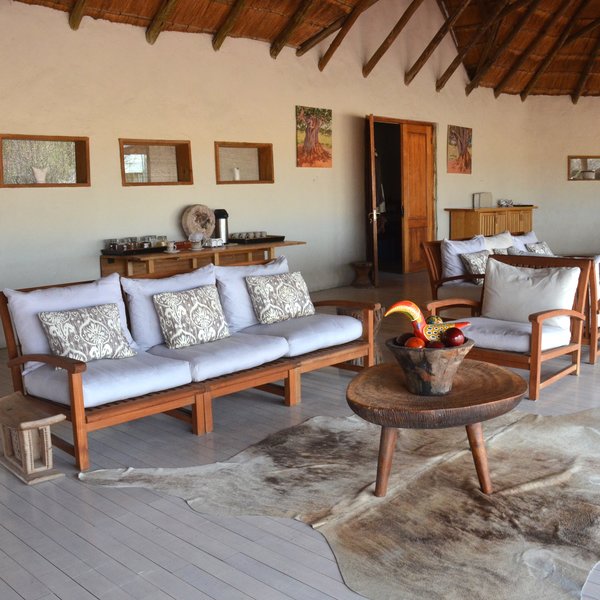
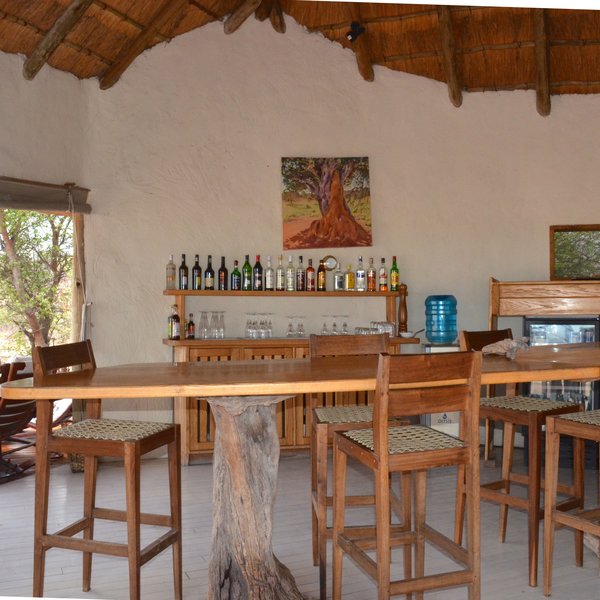
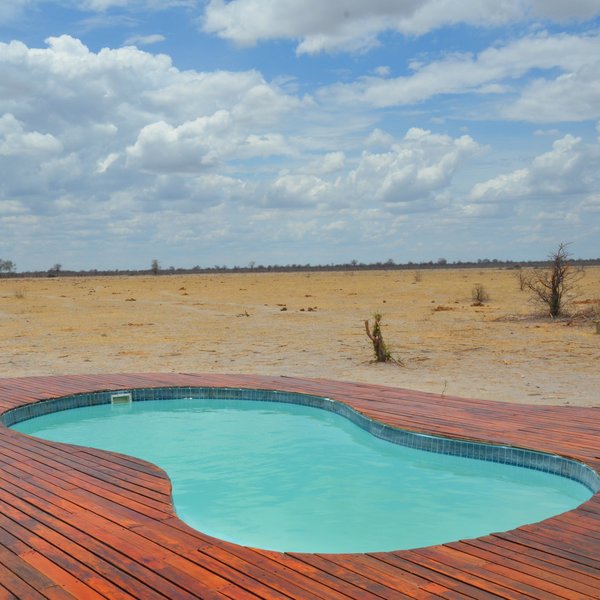
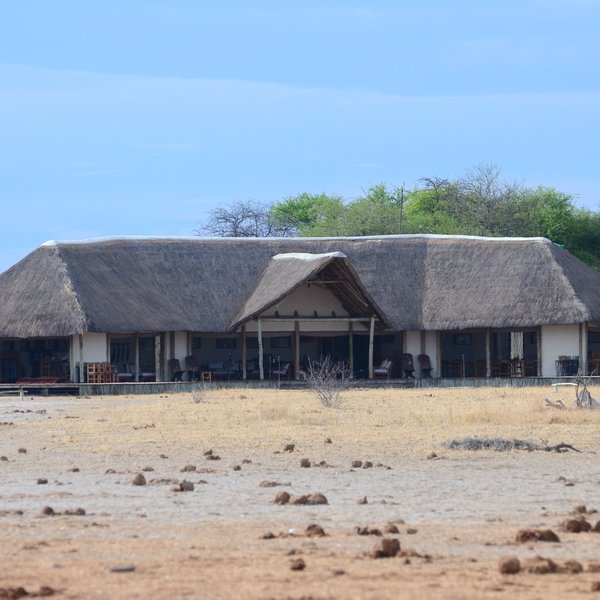
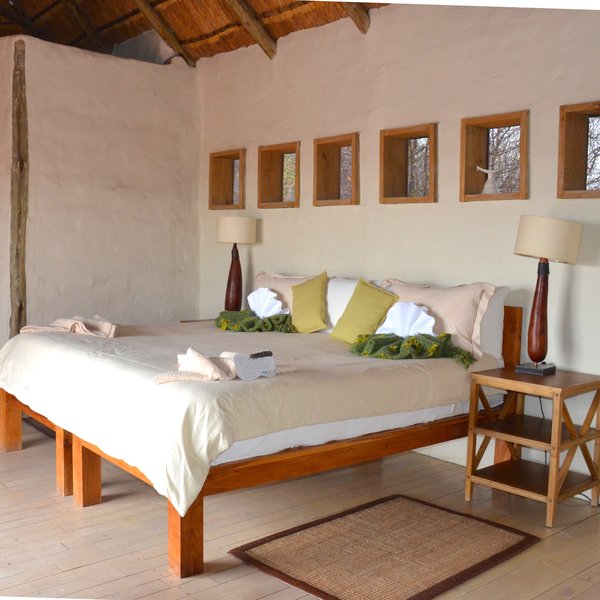
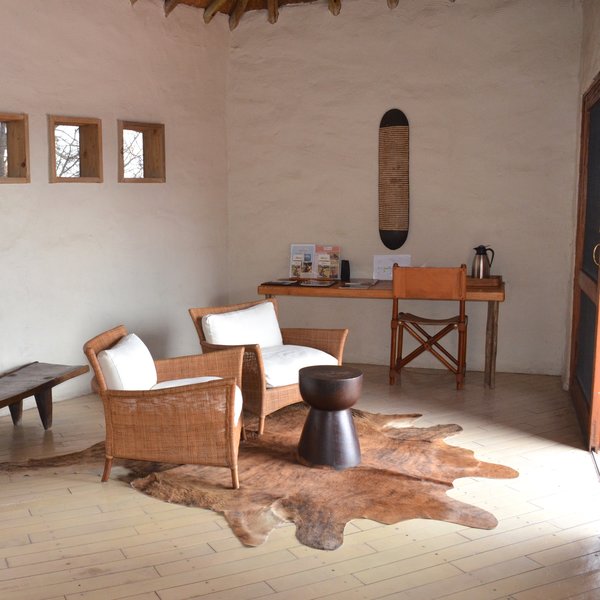
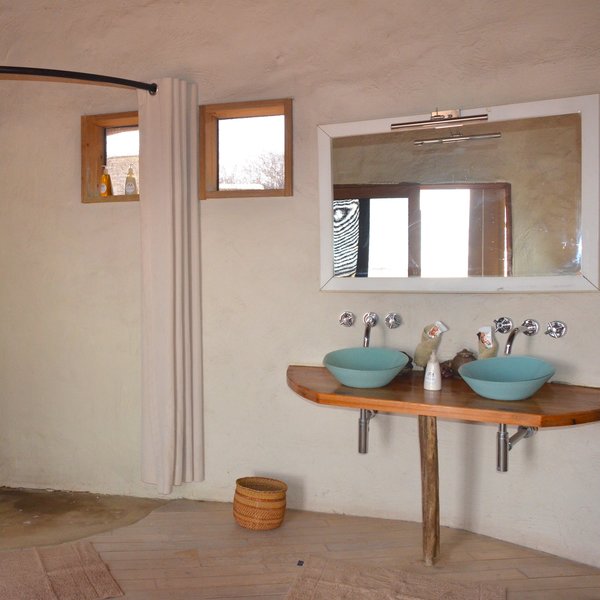
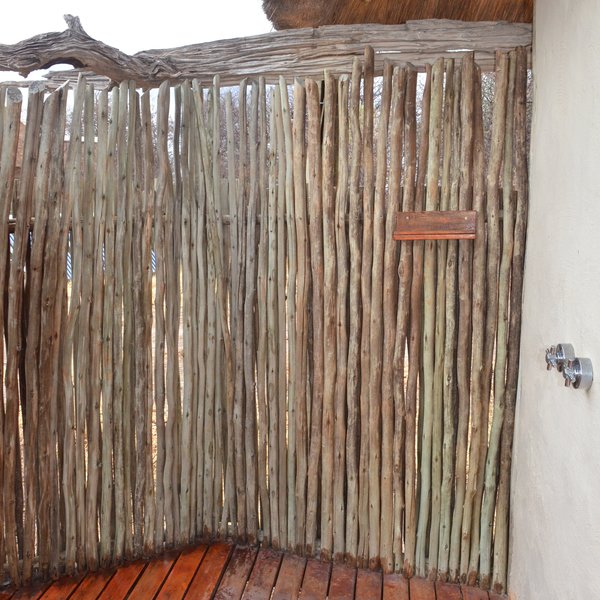
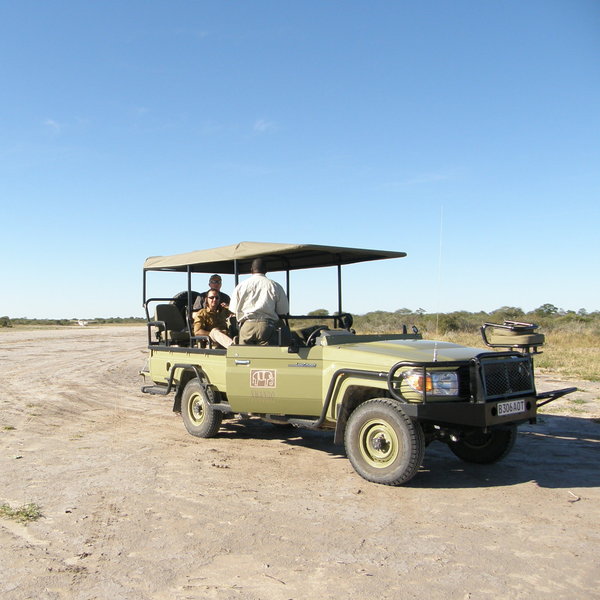
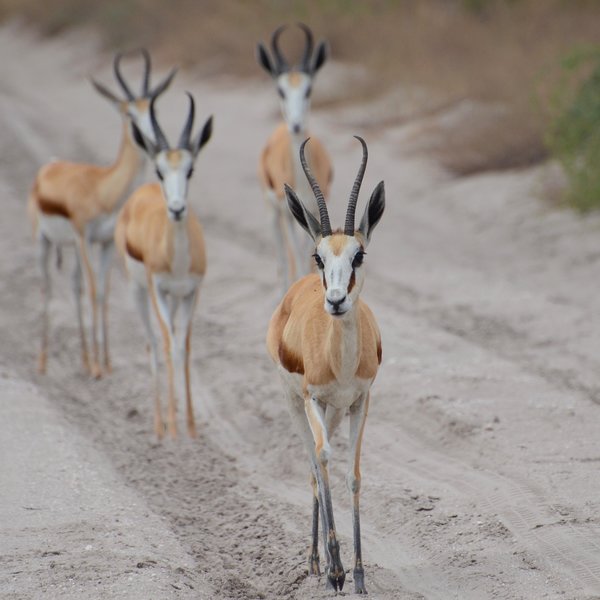
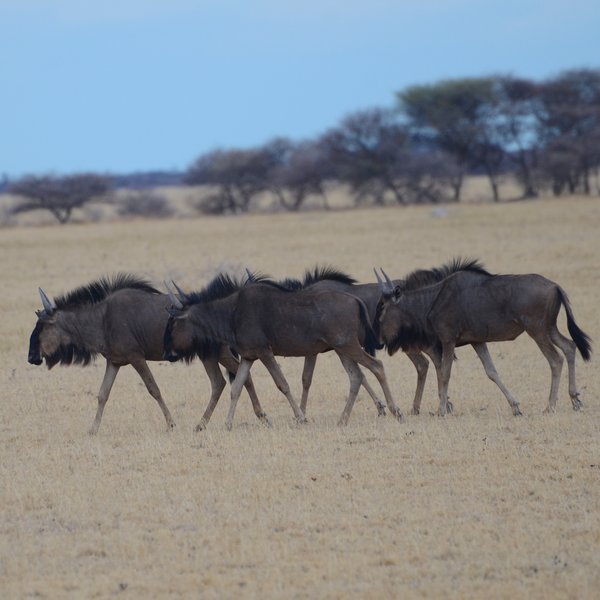
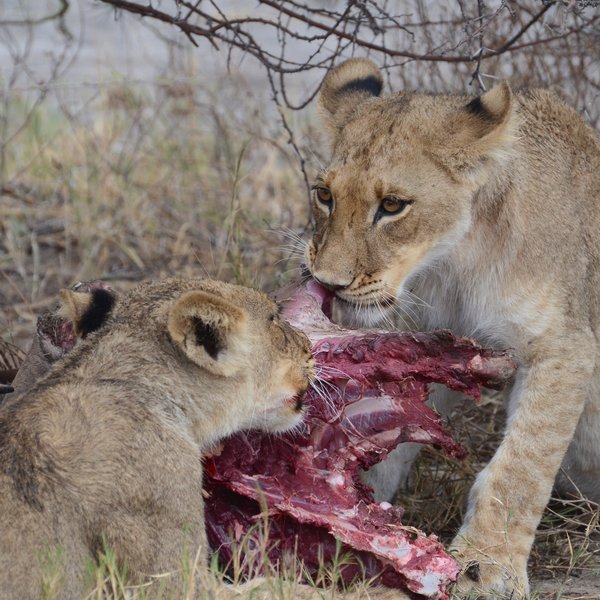
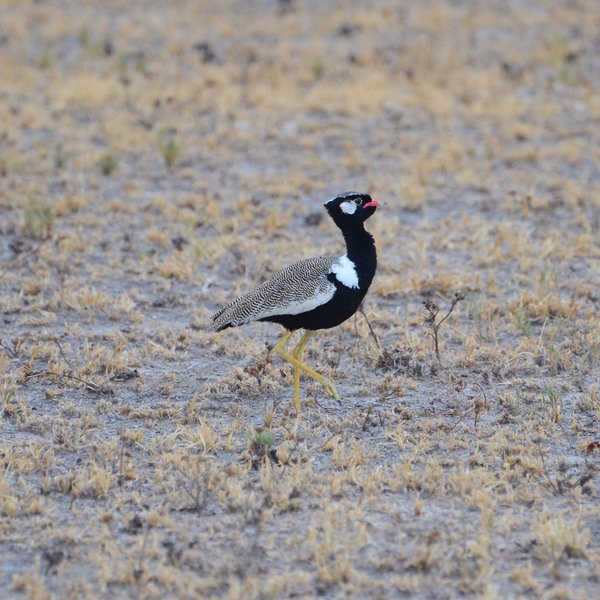
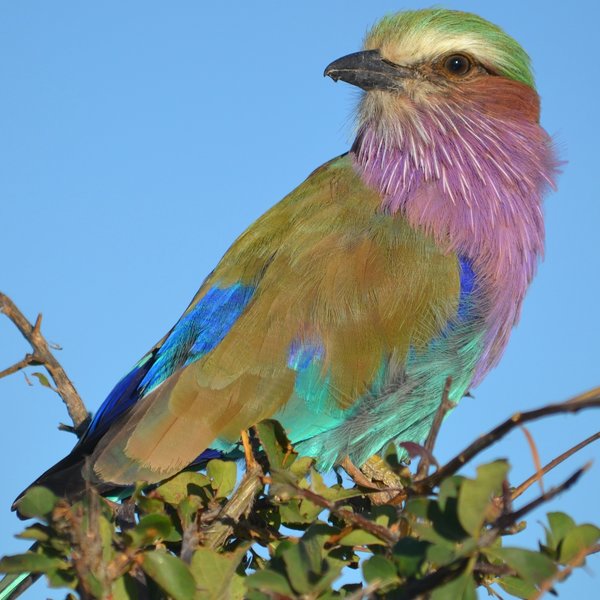
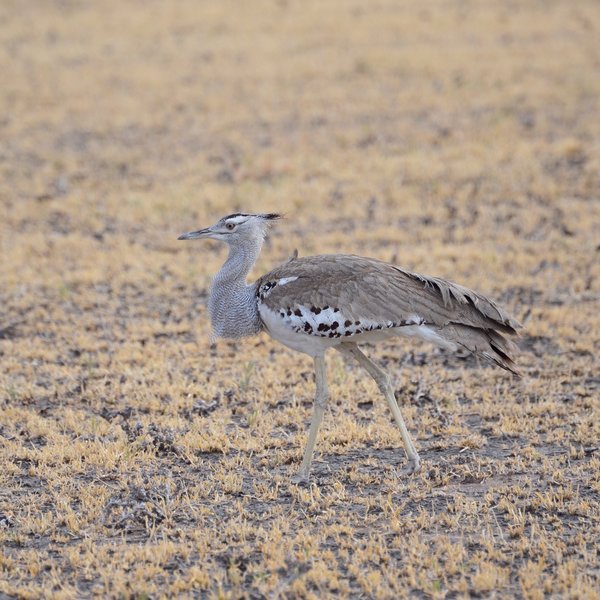
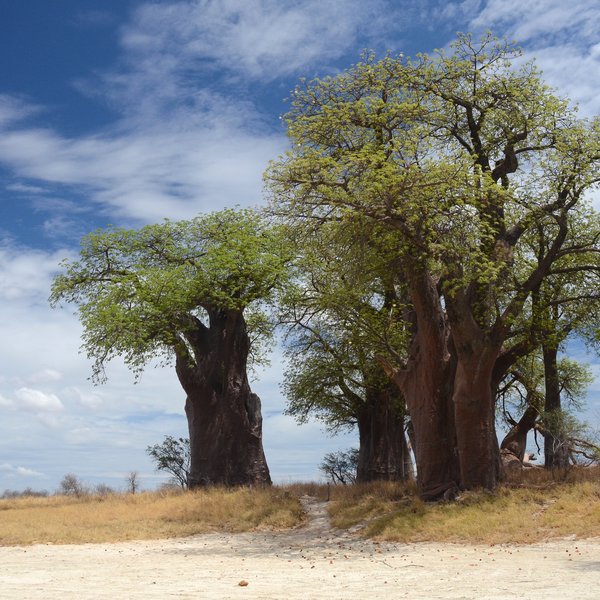
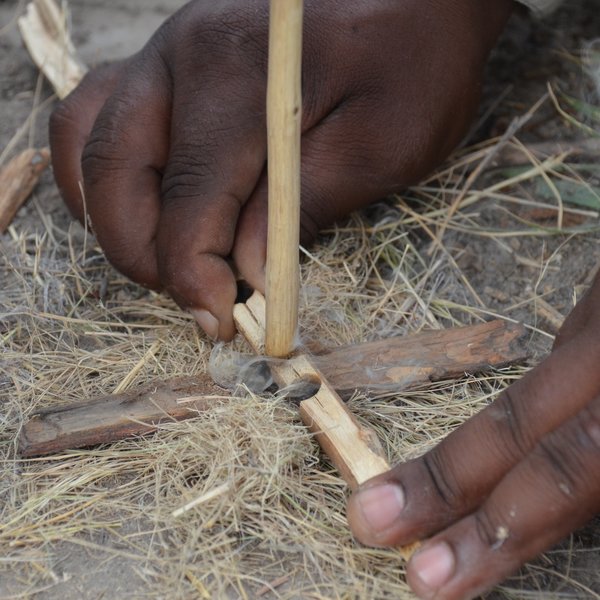
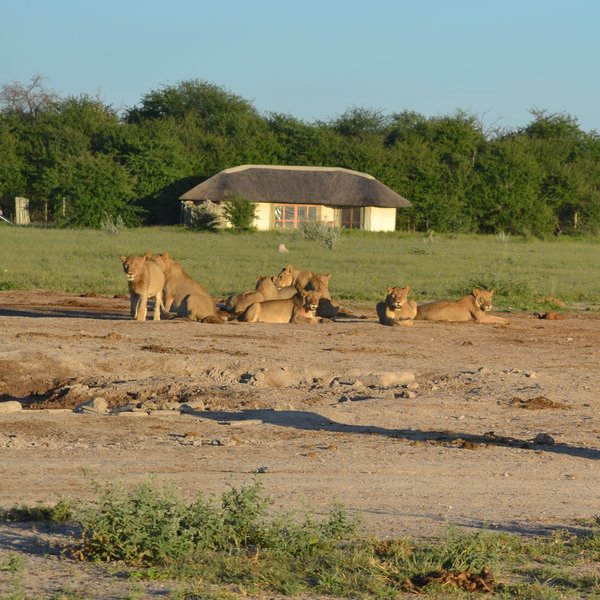
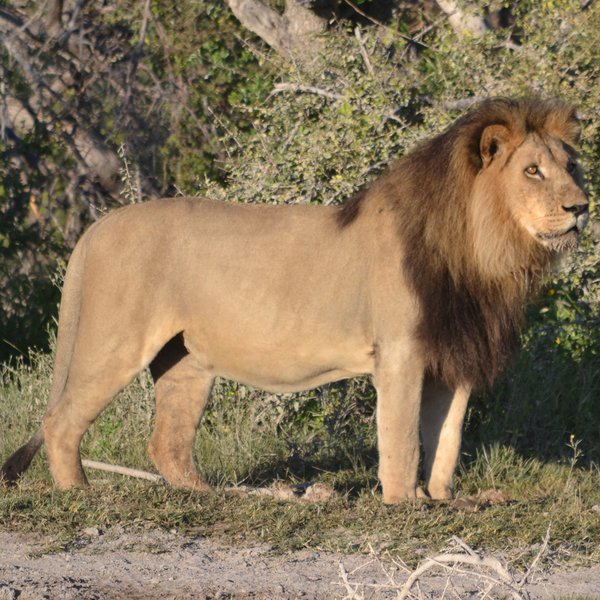
Expert Africa's gallery
When we travel we take lots of photos ourselves to give you a real and un-edited view of the safaris. See our 41 pictures and 1 videos of Nxai Pan Camp to get the candid view.
View galleryNxai Pan Camp: Our full report
Nxai Pan Camp was opened in February 2009 and is still the only permanent camp within Nxai Pan National Park.
It faces east over the open plains of Nxai Pan, a grass-covered fossil lake-bed that was once part of the great lake that covered central Botswana. In the 'green season', between about late November and April, this area attracts large numbers of plains game, especially zebra.
Nxai Pan Camp is built in a semi-circle, with all the chalets and the main area facing towards an active waterhole. The main area is a solid, crescent-shaped structure under a tall thatched roof, completely open to the front and slightly raised on a wooden deck. It's a fairly similar design to its sister camp, Tau Pan Camp, in the Central Kalahari Game Reserve. There are canvas blinds which can be rolled down in case of cold or inclement weather, something which we really appreciated on one particularly cold night in May, during the southern hemisphere winter.
The dining area, with an exceptionally long communal table, plays host to brunch and dinner. This flows seamlessly through a simple little lounge area to the well-stocked bar at the other end of the building. Here you'll find a 'help-yourself' drinks fridge, as well as tea- and coffee-making facilities. White-washed floors blend in with the lighter-coloured earth around the camp, and add to the overall light and airy feel.
Outside, the wide, wooden viewing deck at Nxai Pan Camp leads down to an open, sandy firepit area. Guests often enjoy pre- and post-dinner drinks around the fire, and an early breakfast is usually served here too, before the morning activity.
Off to one side of the deck is a small plunge pool, with sunloungers offering front row seats to the action at the permanent waterhole in front of the camp. On one of our visits, we were quite entertained watching herds of bull elephants vying for prime position in the water.
The curio shop was well stocked when we visited, with a good range of items available. We were particularly grateful for our complimentary fleeces on a chilly morning game drive during one visit in March.
The nine chalets at Nxai Pan Camp, including one family unit, flank the main area, and are linked by raised wooden walkways. Inside, the chalets are wide, airy and spacious. Thick walls constructed of polystyrene with chicken wire and plaster afford good insulation, and these, together with an overhead fan, help to keep the chalets cool in summer and warm in winter. Although the lighting is quite poor at night, this is offset a little by light-coloured wood and white-washed floorboards.
At one end of each chalet is a sitting area and writing desk. In the centre, oversize twin beds, or a big double, face out through sliding doors with full-length gauze screens onto a wooden deck, most with good views of the permanent waterhole in front of the camp. At the opposite end, hidden behind a wall, is a very spacious en-suite bathroom complete with twin basins on a polished wooden counter, a large mirror, plenty of shelving and hanging space for clothes, an electronic safe, indoor and outdoor showers and a separate flush toilet. You'll also find shampoo, conditioner, bodywash, dressing gowns and a little pot of washing powder for your smalls.
The family unit has exactly the same facilities as the other chalets but with the addition of a second, twin-bedded room leading off the main bedroom. Note that there is only one shared bathroom for the whole family.
Game viewing in Nxai Pan National Park can be erratic, but is often exceptional in the so-called 'green season', usually from November to April. This is when the area receives the annual rains, and the pans become covered in lush, sweet grass. The abundance of nutritious food attracts swathes of plains game, including zebra, springbok, wildebeest and gemsbok: a veritable buffet for predators – including lion, cheetah, black-backed jackals and (because of the woodlands dotted around the pans) even leopard.
Of note are the unusually large herds of giraffe that have been spotted here, sometimes more than 30 in any one group. It was interesting to us that, because of the mixed vegetation, this is one of the few places in Botswana, and probably the most northern part of the country, where you are likely to encounter impala and springbok together.
Activities at Nxai Pan Camp centre around morning and afternoon game drives in 4WD vehicles. Game drives here feature a guide and tracker team which can really help to maximise possible game sightings. Because the camp is in a national park, however, no off-road driving or night drives are allowed.
On our most recent visit we were treated to plenty of great game. As well as countless elephant, both at the permanent waterhole in camp and on our game drive, we saw cheetah, a pride of 19 lions, leopard, zebra, jackal, wildebeest, giraffe, both impala and springbok, oryx, and the elusive nocturnal porcupine.
The birding at Nxai Pan was exceptional! During our two days here we saw red-billed quelea, blacksmith lapwing, black-chested snake eagle, African hoopoe, pale chanting goshawk, western cattle egret, lilac-breasted roller, fork-tailed drongo, crimson-breasted shrike, Montagu’s harrier, greater kestrel, Kalahari scrub robin, shaft-tailed whydah, southern masked weaver, rufous-naped lark, tawny eagle and secretary bird.
In the southern section of Nxai Pan park is an unusual group of giant baobab trees. Known as Baines’ Baobabs, they were immortalised by the Victorian artist Thomas Baines, who painted them in 1861. If you were to look at his picture today, you'd note that they remain almost exactly as he painted them around 150 years ago. They are quite a drive from the camp, so are usually best visited on a full-day trip – though it's worth noting that the long and bumpy drive is not a game-drive route. Of considerable note on this trip was our epic sighting of a 2.5m black mamba crossing the road on our way to Baines’ Baobabs!
Activities
4WD Safari
Birdwatching
Cultural excursion
Guided walking safari
Private activities
Families & children
- Attitude towards children
- Nxai Pan Camp has a positive approach to children on safari and, generally, children are welcome. However, please take into account the restrictions below.
- Property’s age restrictions
- Families with children of 6–12 years are required to take a private vehicle on game drives. Depending on the size of the family group, there may be an additional charge for this vehicle.
Children younger than six are accepted only if the entire camp is reserved for exclusive use. - Special activities & services
- The lodge can arrange special activities for children, such as kite-flying and marshmallow-roasting. The staff try to be flexible with children's mealtimes, and to cook favourites such as macaroni cheese.
Guests travelling with children have the option of booking a specialist 'family safari' (at extra cost). The family will explore with a specialist guide, inspiring children to learn and love the wilderness. They will also benefit from a private vehicle with their own guide and tracker who will look after them both on game drives and in camp. - Equipment
- There is a two-bedroom family unit at Nxai Pan Camp, but no special equipment is available.
- Generally recommended for children
- We recommend Nxai Pan Camp for more mature children over the age of 6, who are genuinely interested in different aspects of nature.
- Notes
- Nxai Pan Camp has an electric fence to prevent elephants from drinking out of the pool and damaging their water pipes, but other dangerous wildlife can wander through the camp at any time. There is also no fence around the pool. Parents must supervise their children at all times.
Food & drink
- Usual board basis
- Full Board & Activities
- Food quality
- A light breakfast is served around the campfire before your morning activity. Breakfast usually consists of freshly baked muffins, homemade muesli, fresh fruit, a pot of porridge bubbling on the fire, tea, coffee and fruit juice.
Brunch is served on return from your morning excursion and always consists of salad, freshly baked bread, a hot dish and eggs cooked to order.
Afternoon tea generally comprises both a savoury and a sweet dish. On previous visits, the homemade spicy chutney served with chicken and vegetarian pizza slices was delicious and, along with pineapple cake, very satisfying. Tea, coffee, refreshing homemade lemonade and iced tea re also on offer.
Dinner is three courses, usually served a little earlier than at camps in private concessions as you'll arrive back in camp within about 30 minutes of sunset. In the past we have enjoyed tasty spinach and feta filo pastries for a starter, followed by a buffet of mixed venison and vegetable stew, a vegetarian lentil bake, steamed carrots and baby marrows. It wasn't haute cuisine, but it was homemade and flavoursome. Dessert was a simple baked apple with a drizzle of custard. - Dining style
- Group Meals
- Dining locations
- Indoor and Outdoor Dining
- Further dining info, including room service
- There is no room service at Nxai Pan Camp.
- Drinks included
- Bottled water, soft drinks, local beers and spirits and a limited selection of (usually) South African red and white wines are included. Champagne and imported wines and spirits cost extra and may need to be requested in advance. Each guest is given a labelled plastic water bottle to keep, and is encouraged to top it up with filtered water from the camp's main area, generated by reverse osmosis machine. Each chalet is also provided with glasses and a flask of filtered drinking water, which is replenished daily.
Our travellers’ wildlife sightings from Nxai Pan Camp
Since mid-2018, many of our travellers who stayed at Nxai Pan Camp have kindly recorded their wildlife sightings and shared them with us. The results are below. Click an animal to see more, and here to see more on our methodology.

100% success

100% success

100% success

100% success

67% success

63% success

43% success

25% success

14% success

11% success

11% success

0% success

0% success

0% success

0% success
Getting there
- Location
- Kalahari's Salt Pans, Botswana
- Ideal length of stay
- Two nights at Nxai Pan is usually ideal, but during the summer months when summer game-viewing opportunities are potentially very good, we might suggest three nights.
- Directions
- Access is usually by air. It is approximately a one-hour light aircraft flight from Maun Airport to the airstrip for Nxai Pan Camp, followed by a 15-minute game drive to the camp.
- Accessible by
- Fly-and-Transfer
Special interests
- Family safaris
- Nxai Pan Camp has a family unit and is a good option for a family safari in Botswana for those with older children who are enthusiastic about wildlife. It is also possible to book a private 'family safari', guided by a child-friendly guide and tracker.
- See ideas for Family safaris in Botswana
Communications
- Power supply notes
- Nxai Pan Camp uses solar power to generate electricity for the camp, and to heat the water. Generally the solar system is reliable although it can take several minutes for the hot water to make its way to the tap. The generator is run for three hours morning and evening – both times when guests are out on activities.
Electrical equipment can be charged in the main office; the camp has a range of adaptors which should work for the majority of appliances. Power is available in the chalets at all times. - Communications
- Wi-Fi is available in the guest rooms, but there is no cellphone reception. In an emergency, radio contact can also be made with the main office in Maun.
- TV & radio
- There is no TV or radio at Nxai Pan Camp.
- Water supply
- Borehole
- Water supply notes
- All the chalets have plumbed hot and cold running water for showers, basins and flushing toilets. Guests are given a water bottle on arrival which they are encouraged to top up from the filtered supply in the camp’s main area. Each room is also provided with glasses and a flask of filtered drinking water, which is replenished daily.
Health & safety
- Malarial protection recommended
- Yes
- Medical care
- Camp managers are first-aid trained and a first-aid kit is kept at camp. In an emergency, the camp can arrange for clients to be flown out. Please note that it is only possible to fly out of camp during daylight hours as the bush airstrips do not have any lighting at night.
- Dangerous animals
- High Risk
- Security measures
- The walkways are slightly raised off the ground but dangerous wildlife is known to move through camp. Therefore guests are escorted to their chalets after dark. A safety talk is given on arrival and 'fog-horns' are provided in the chalets to raise the alarm in case of emergency.
- Fire safety
- There are fire extinguishers in the communal areas of the camp and in each chalet.
Useful info
- Disabled access
- On Request
- Laundry facilities
- A laundry service is included (excluding underwear). Laundry is collected in the morning and usually returned the same day, weather permitting. Washing powder is provided in the room for guests to wash their 'smalls'.
- Money
- There is a safe in each room. Please note that no exchange facilities are offered.
- Accepted payment on location
- MasterCard and Visa credit cards are accepted; Diners and Amex are not. No commission is charged on credit card transactions, but there is a 3% surcharge on curios if a card is used in payment. Cash in the form of South African rand, GB sterling, US dollars, euros and Botswana pula is accepted.
Plan and book your trip with Expert Africa
All of our trips are tailor-made, so we'll always adapt them to suit you. Talk to an Expert and let us plan and arrange your perfect trip.

Talk to an Expert
Call or email us now! We’ll match you with the Specialist in our team who is best suited to help you. Then together we can start planning your trip.

Set up your itinerary
Based on our experience and your ideas, your specialist will create a detailed, costed itinerary. We’ll refine it together, until we have a trip that you’re perfectly happy with.

Prepare for your trip
The same Specialist will make the seamless arrangements for your trip, send you detailed travel documents, and be available to answer any questions before you depart.

Travel with peace of mind
After you set off, you’ll be cared for by our partners in Africa, most of whom have worked with Expert Africa for decades. And if you ever need us urgently, we’re available 24/7.

When you return
We love to learn about your trip, and so will always be grateful if you’ve the time to give feedback to your Specialist when you return.
Nxai Pan Camp's location
Look closer at the environment and surroundings of Nxai Pan Camp.
Excursions from Nxai Pan Camp
Optional extra day-trips and excursions possible whilst you're staying at Nxai Pan Camp. Talk to us: these are usually best arranged before you go.
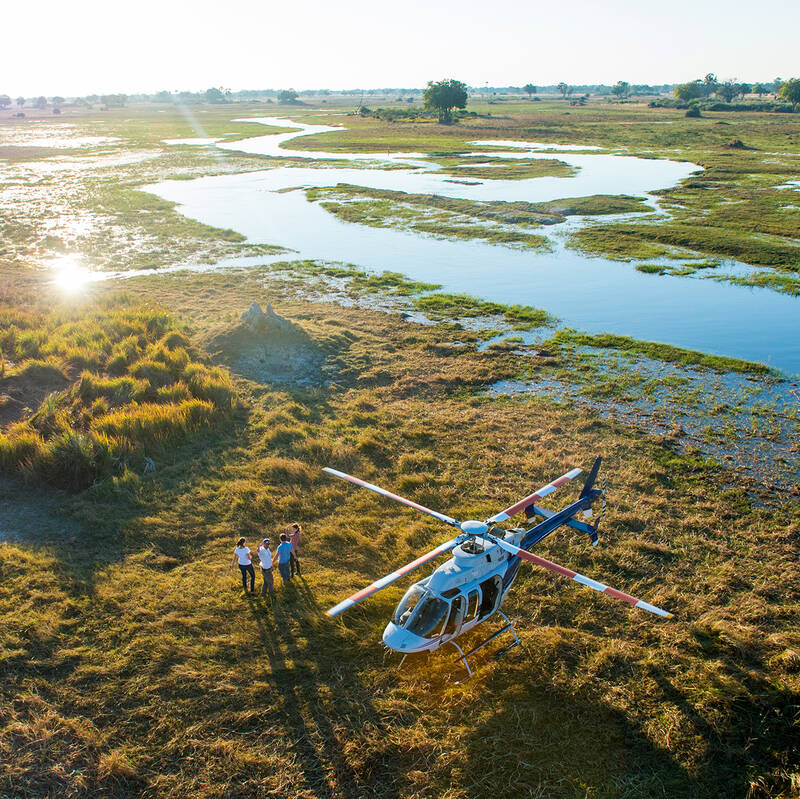
Helicopter Flight - Botswana
Various: from 30 minutes to half a day.
Low-flying, agile and offering superb views, helicopters are an ideal way to move around the Okavango Delta.You can use them instead of fixed-wing inter-lodge transfers or as an addition to other wildlife watching activities, and of course, helicopters can hover to allow that perfect pic, whereas fixed-wings can’t.
More about Helicopter FlightOther lodges in Kalahari's Salt Pans
Alternative places to stay in this same area.
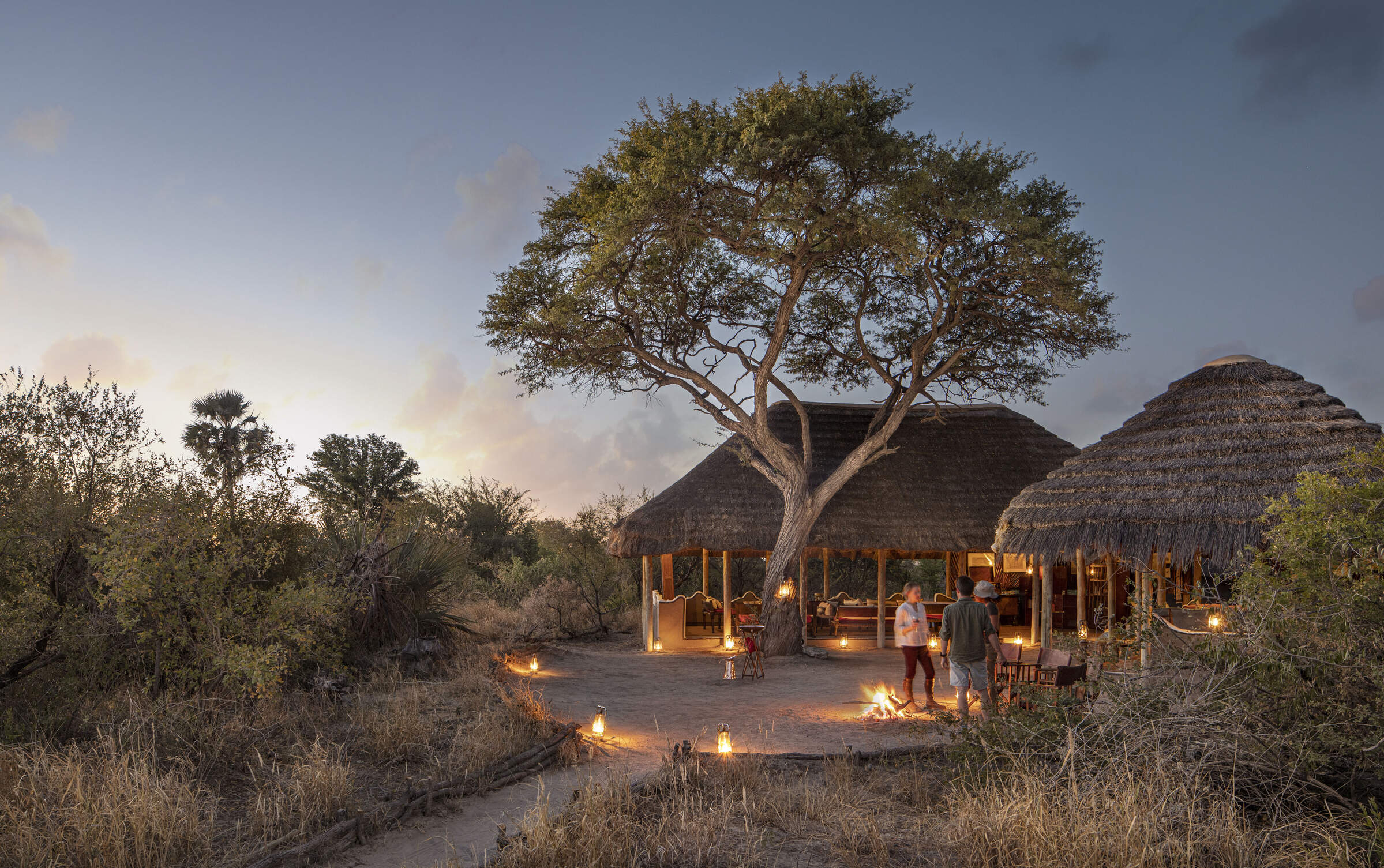
Camp Kalahari
Overlooking the Makgadikgadi Pans, Camp Kalahari is great value; come for quadbiking excursions on the salt pans, cute meerkats, excellent Bushman walks, and interesting 4WD safaris.
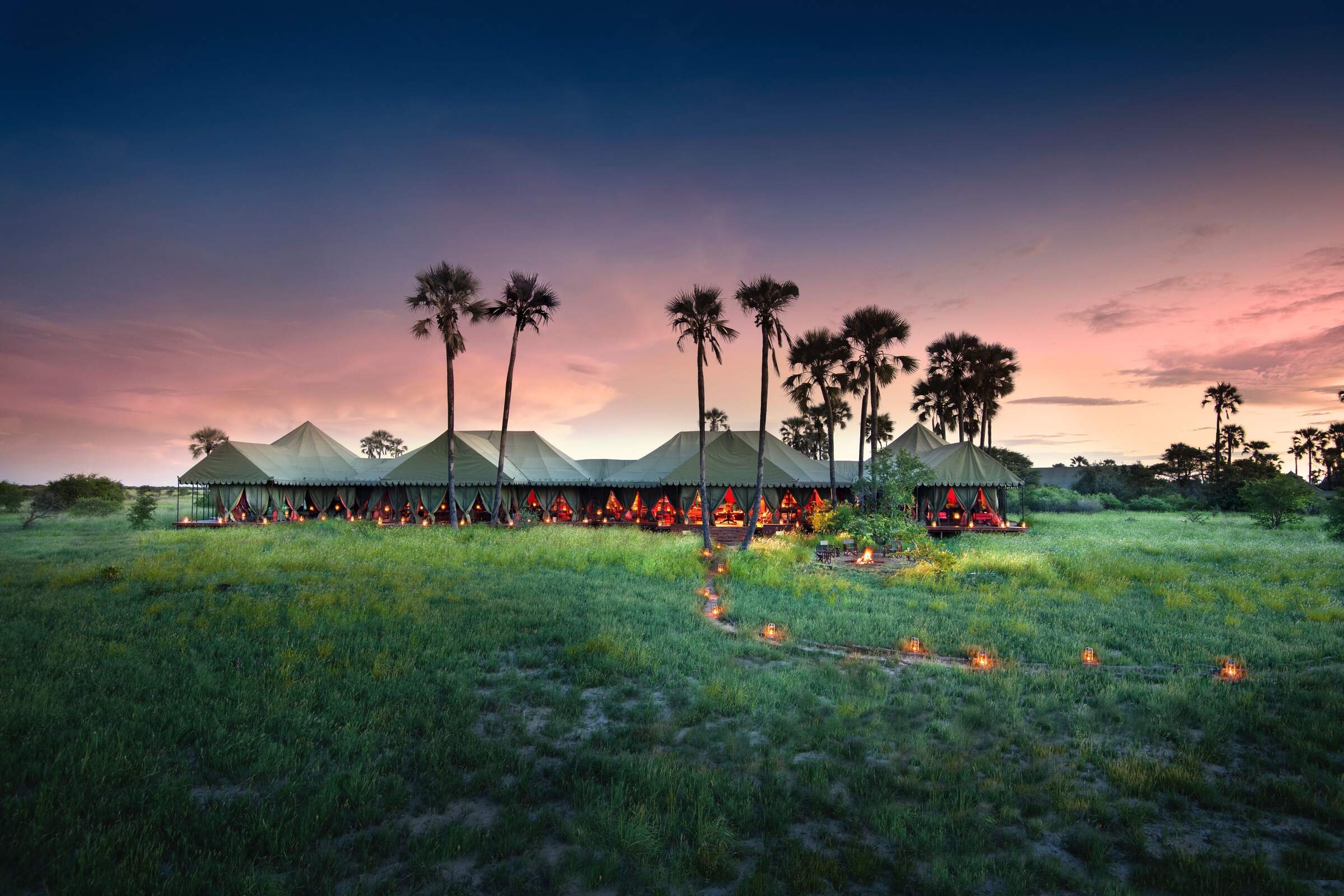
Jack's Camp
Jack's Camp was the original camp in the Makgadikgadi area, and many still consider it the best. Come for a unique and memorable experience, but not for prolific game viewing.
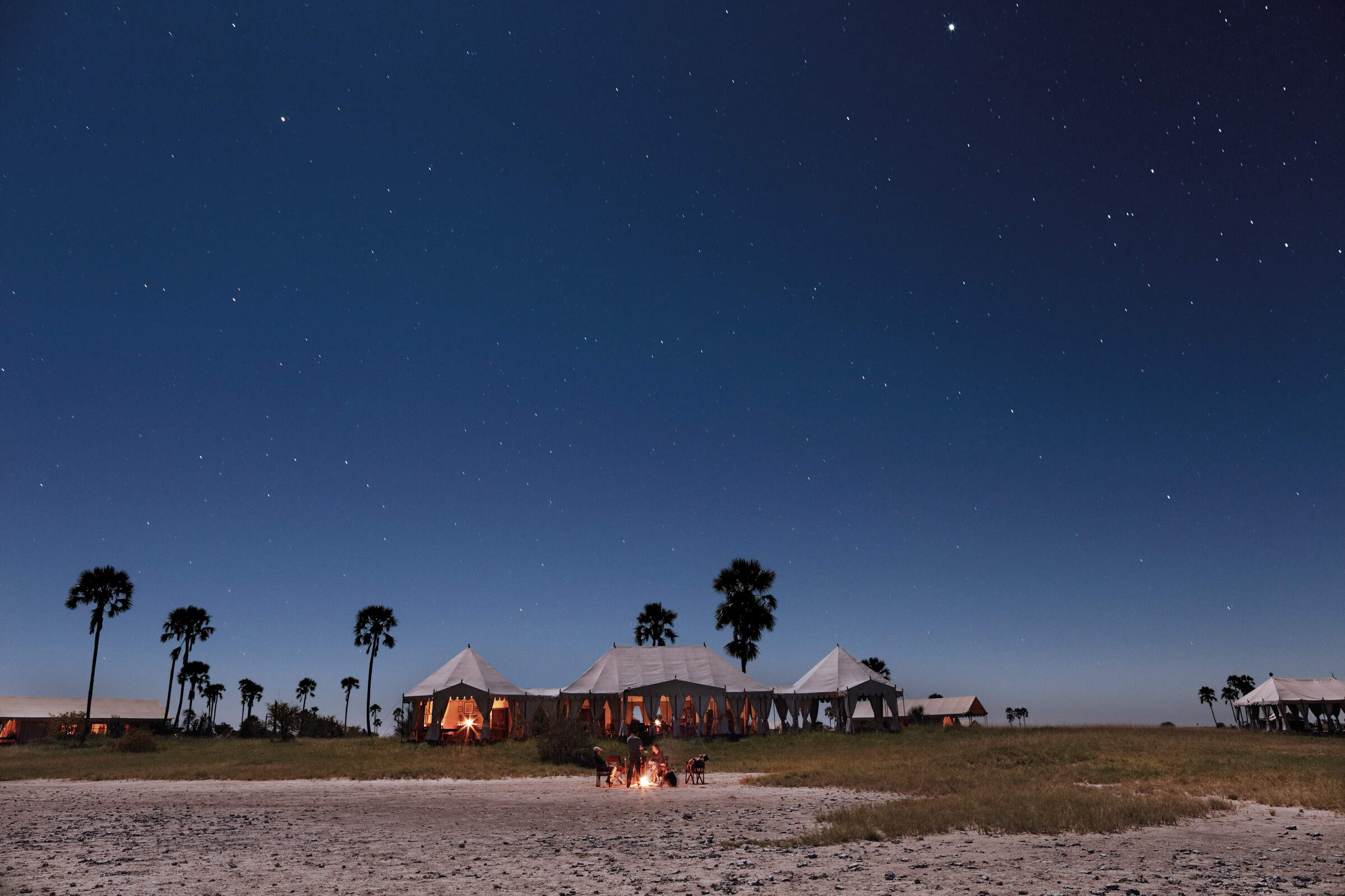
San Camp
The simple but stylish San Camp lies in a stunning location beside the Makgadikgadi Salt Pans, where highlights are quadbiking, meerkats, and Bushmen walks.
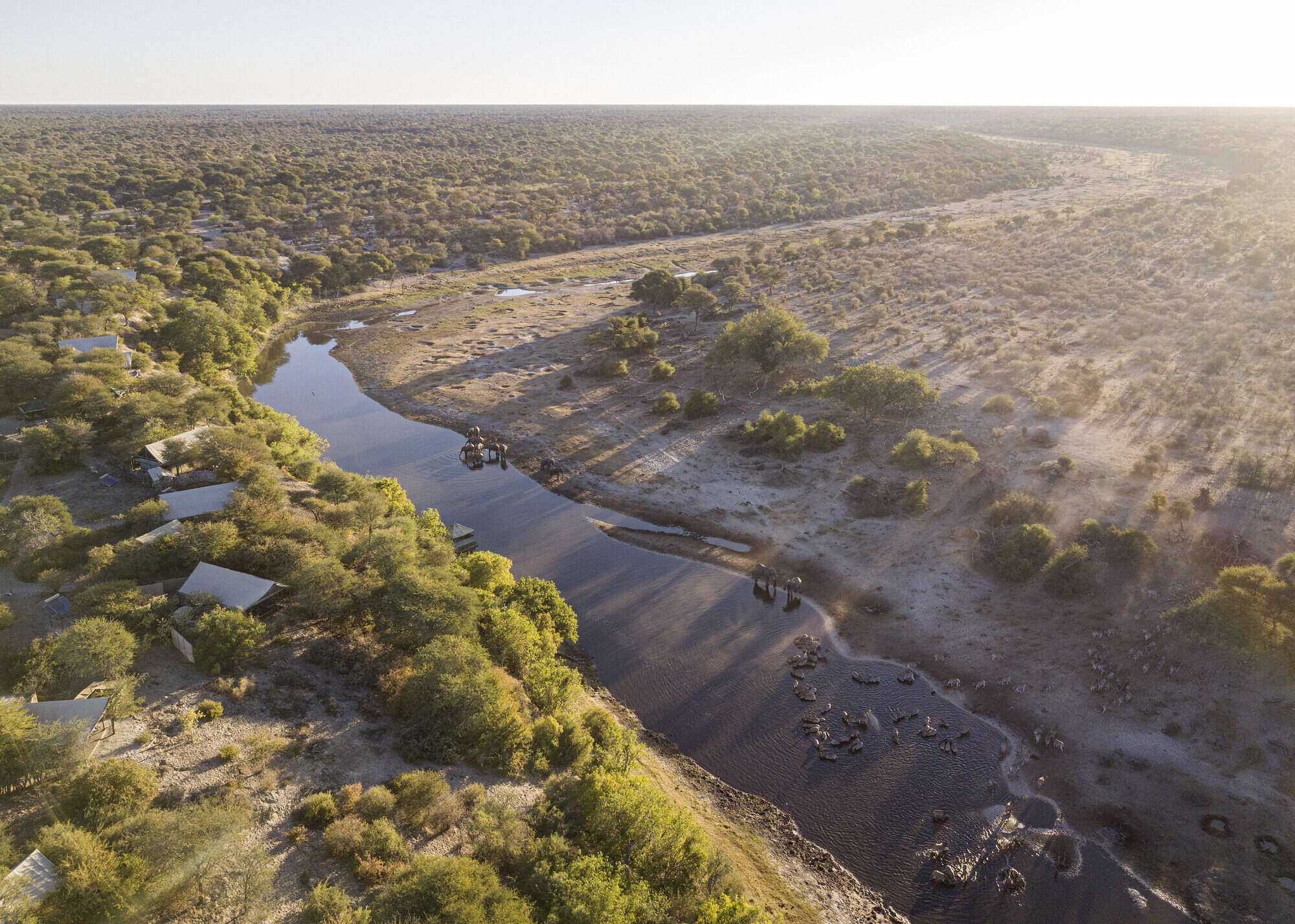
Meno A Kwena
Meno A Kwena Tented Camp is an old-style safari camp, run by an experienced Botswana expert. Overlooking the bed of the Boteti River, it's a great place to relax and watch wildlife at the camp's waterhole.
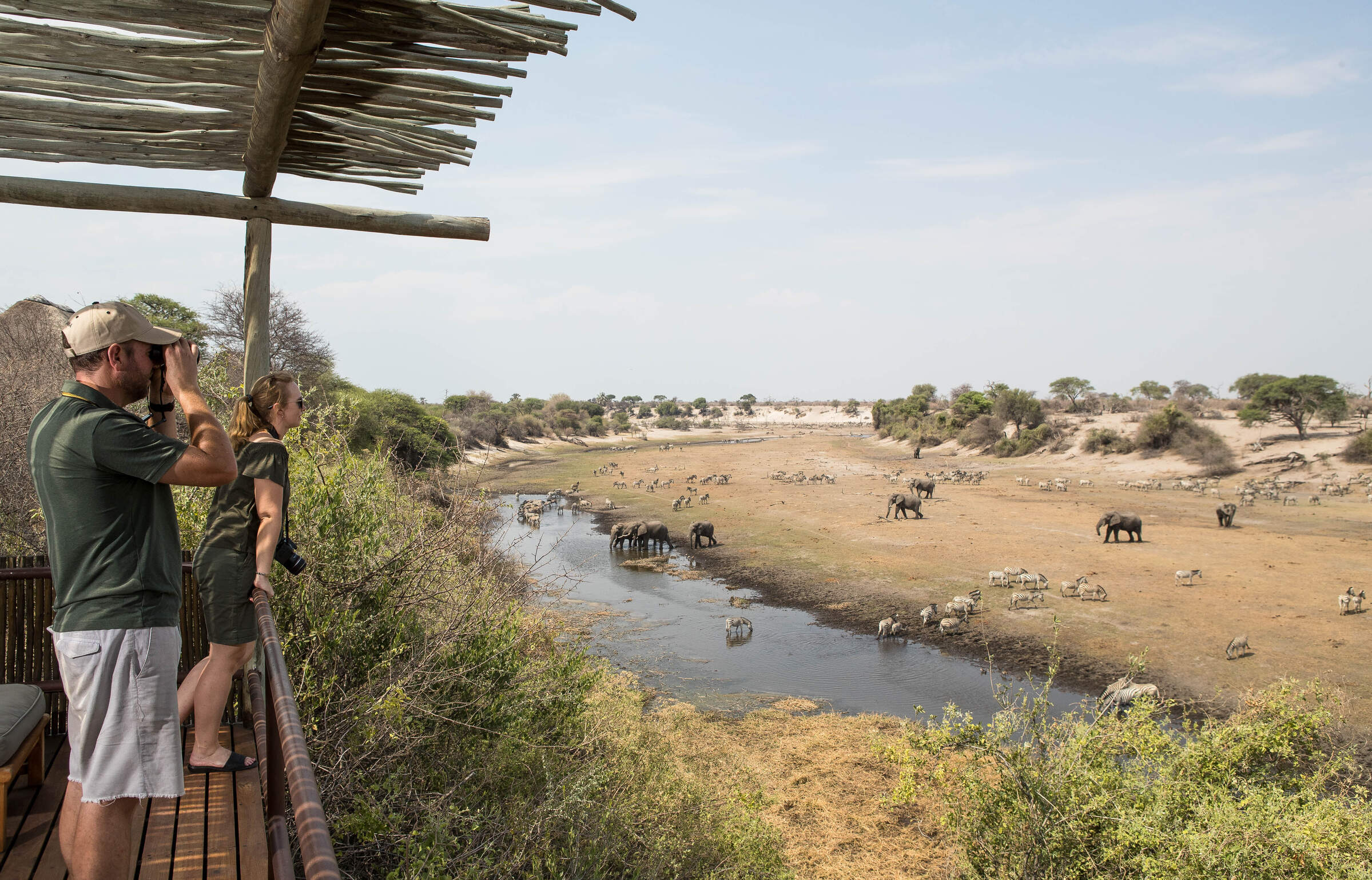
Leroo La Tau
From the western bank of the Boteti River, Leroo La Tau overlooks the Makgadikgadi Pans National Park, where game concentrations are highest from July to October.
When to go to Kalahari's Salt Pans
Our month by month guide: What it's like to visit Nxai Pan Camp in Kalahari's Salt Pans
Jan
Feb
Mar
Apr
May
Jun
Jul
Aug
Sep
Oct
Nov
Dec
Kalahari's Salt Pans in January
January is the peak of the rainy season, bringing short but intense downpours that flood the pans, transforming the landscape into a lush paradise. The Makgadikgadi and Nxai pans become vast grasslands, attracting large herds of zebra and wildebeest as part of their annual migration. The Boteti River swells, supporting a diversity of wildlife.
Birdwatching is exceptional, with migratory birds and flamingos breeding in Sua Pan. While game viewing can be challenging due to dispersed wildlife, patient observers can spot predators like lions and cheetahs taking advantage of newborn prey.
Low-season rates make this an attractive time for budget-conscious travellers.
- Salt pans flood, creating a dramatic transformation
- Zebra migration draws predators
- Flamingo breeding season in Sua Pan
- Exceptional birdwatching and photography opportunities
- Low visitor numbers, offering an exclusive experience
Our view
A good time to visit, with pros & cons
Weather in January
Kalahari's Salt Pans in February
February remains lush and vibrant, with the zebra migration in full swing across the pans. Nxai Pan National Park is particularly rewarding, as grasslands attract large herbivore herds and their predators. The famous Baines’ Baobabs stand starkly against the green backdrop, making for breathtaking photography.
With water sources abundant, birdwatching is at its peak, and flamingos continue to thrive in Sua Pan. The Boteti River remains active, drawing thirsty wildlife. However, thick vegetation can make spotting large animals more challenging.
Camps and lodges offer excellent availability and value during this period.
- Peak of the rainy season, pans fully flooded
- Zebra migration at its most dramatic
- Flamingos still abundant in Sua Pan
- Green season rates offer excellent value
- Lush landscapes provide an ideal setting for photography
Our view
A good time to visit, with pros & cons
Weather in February
Kalahari's Salt Pans in March
March is a transitional month: the main rains beginning to taper off but the Makgadikgadi and Nxai Pan landscapes remain lush and teeming with life. The zebra migration starts moving northward from Makgadikgadi and Nxai, but large herds are still present, making this a great time for game viewing.
If it’s accessible, this is a lovely time to visit Kubu Island, as the contrast between the granite outcrops and the surrounding greenery can be striking. Predators remain highly active, particularly around Nxai Pan and Kukome Island, where they hunt the last of the young antelope. Birdwatching is still rewarding, and as water begins to recede, quad biking opportunities start opening up in drier areas.
- Rains begin to taper off, but pans remain lush
- Final opportunity to witness the zebra migration
- Flamingos start to disperse from Sua Pan
- Good predator-prey interactions
- Shoulder season begins, with fewer tourists
Our view
A good time to visit, with pros & cons
Weather in March
Kalahari's Salt Pans in April
While occasional late rains may occur, April marks the end of the rainy season, with floodwaters receding and the landscape drying out. The Makgadikgadi Pans begin transitioning back to their iconic white salt flats as the water evaporates, creating striking contrasts for photography. This creates a unique landscape where wildlife is easier to spot against the increasingly barren backdrop.
Wildlife concentrates around the remaining waterholes in Nxai Pan, while the Boteti River can becomes a valuable lifeline for thirsty animals. Walks with San Bushmen and quad biking adventures on the salt pans become more accessible.
Night-time temperatures begin to drop, especially in the Central Kalahari area, making for comfortable evening game drives to spot nocturnal animals.
- Floodwaters recede, exposing salt flats
- Wildlife concentrates around remaining water
- Clear skies and mild temperatures perfect for game drives
- Baines’ Baobabs surrounded by seasonal water, ideal for photography
- Last month for good green season game viewing
Our view
A good time to visit, with pros & cons
Weather in April
Kalahari's Salt Pans in May
May is a popular month to visit the Kalahari Salt Pans region. The landscape has transformed, with the vast white expanses of Makgadikgadi Pans becoming more prominent. This creates surreal, otherworldly vistas perfect for photography. Wildlife concentrates around permanent water sources like the Boteti River, offering excellent game viewing opportunities. In Nxai Pan National Park, the famous Baines Baobabs stand out starkly against the drying landscape.
This is an ideal time for quad biking adventures across the salt pans. Cooler temperatures, especially in the mornings and evenings, lead to increased predator activity, and meerkat interactions are particularly rewarding, as they are active in the open plains. The skies remain crystal-clear, making for spectacular stargazing and astrophotography.
- Salt flats dry out, creating surreal landscapes
- Wildlife gathers at permanent water sources
- Perfect temperatures for safaris
- Quad biking becomes widely available
- Meerkat encounters highly rewarding
Our view
A very good time to visit
Weather in May
Kalahari's Salt Pans in June
June marks the official start of the dry season in the Kalahari Salt Pans region, bringing crisp, cool mornings and clear skies. The Makgadikgadi and Nxai pans are now vast, shimmering white expanses, offering incredible photographic opportunities. Wildlife viewing is excellent as animals congregate around the Boteti River.
Night-time temperatures can reach freezing, but daytime temperatures are pleasant. The clear, crisp air enhances visibility, making this a favourite time for serious photographers and one of the best months for stargazing. The atmosphere in June is at its clearest, allowing for spectacular views of the Milky Way. Meerkat encounters continue to be a highlight, with the animals more active in the cooler weather. The salt pans are now bone-dry, opening up thrilling quad biking excursions.
- Cold mornings, comfortable days for safaris
- Wildlife highly visible along the river and scarce waterholes
- Best time for quad biking across the salt pans
- Exceptional stargazing with crystal-clear skies
- Meerkats remain highly active and visible
Our view
Fantastic: the very best time to visit
Weather in June
Kalahari's Salt Pans in July
July offers excellent conditions for exploring the Kalahari Salt Pans. The Makgadikgadi Pans present a stark, lunar-like landscape, perfect for atmospheric photography. Wildlife viewing is superb, with animals concentrated around permanent water sources like the Boteti River. This is an excellent time to visit Nxai Pan National Park, where the famous Baines Baobabs stand out dramatically against the dry landscape.
The clear night skies offer phenomenal stargazing opportunities. Quad biking adventures across the salt pans are popular, providing a thrilling way to experience the vast, otherworldly terrain. Meerkat encounters continue to be a highlight, with these charismatic animals easily observable in the sparse vegetation. Guided walks with San Bushmen offer insights into traditional survival skills in this harsh environment.
- Peak dry season, best time for game viewing
- Ideal conditions for astrophotography
- Wildlife highly concentrated around water sources
- Quad biking across vast salt flats remains a highlight
- Bushmen cultural experiences highly recommended
Our view
Fantastic: the very best time to visit
Weather in July
Kalahari's Salt Pans in August
August marks the height of the dry season and is a popular time to visit the Kalahari Salt Pans, coinciding with northern hemisphere summer holidays. Mornings are cool and days are warm, making it perfect for a range of activities.
The Makgadikgadi and Nxai pans are at their driest, offering surreal, moon-like landscapes. Wildlife viewing is excellent, with animals congregating around the few remaining water sources, particularly along the Boteti River. This is a good time for exciting quad-biking adventures across the vast salt pans – though nights are cold.
For something more sedate, meerkat encounters continue to be a highlight, with clear visibility in the sparse vegetation, and evening stargazing is spectacular due to cloudless skies. The contrast between the white salt pans and the silhouettes of Baines Baobabs in Nxai Pan make for stunning photographic opportunities.
- Peak dry season, animals concentrated at the Boteti River
- Quad biking and guided walking safaris are at their best
- Clear night skies offer stunning stargazing conditions
- Wildlife sightings include elephants, lions, and plains game
- Meerkat encounters continue to be excellent
Our view
Fantastic: the very best time to visit
Weather in August
Kalahari's Salt Pans in September
September brings rising daytime temperatures to the Kalahari Salt Pans, while nights remain cool. The landscape is at its driest, with Makgadikgadi and Nxai pans offering vast, shimmering expanses. This creates ideal conditions for quad biking adventures and stunning photography, especially during the golden hours.
Wildlife activity remains high around permanent water sources, and the dry conditions make it easier to spot predators, particularly around the Boteti River and remaining waterholes. Nxai Pan National Park offers great opportunities to see desert-adapted species. This is a prime time for meerkat encounters, as these charismatic creatures are highly active. San Bushmen cultural experiences are particularly insightful at this time, as they demonstrate survival techniques in one of the driest landscapes of the year.
- Excellent predator viewing as dry conditions continue
- Elephants and large herbivores still frequent waterholes
- Sunsets are especially dramatic due to dust in the air
- Prime month for San Bushmen-guided experiences
- Stargazing and astrophotography remain outstanding
Our view
Fantastic: the very best time to visit
Weather in September
Kalahari's Salt Pans in October
October is one of the hottest and driest months in the Kalahari Salt Pans region, with daytime temperatures often exceeding 40°C/104°F. The Makgadikgadi and Nxai pans are vast, shimmering expanses, creating surreal, mirage-like vistas. This marks the last peak of wildlife concentration at the few remaining water sources before the first rains arrive. Predator-prey interactions along the Boteti River can become particularly dramatic.
Quad biking across the salt pans offers exhilarating adventures and unparalleled views of the lunar-like landscape. Meerkat encounters continue to be a highlight, with clear visibility in the sparse vegetation. As the month progresses, the chances of seeing dramatic dust storms increases, creating otherworldly scenes on the dry pans. The extreme conditions showcase the remarkable adaptations of desert wildlife. Stargazing is exceptional due to very clear skies.
- Hottest and driest month of the year
- Wildlife congregates along river and shrinking water sources
- Predator activity at its peak due to prey vulnerability
- Dramatic sunsets and striking landscape photography
- Quad biking and walking safaris continue to be a highlight
Our view
Fantastic: the very best time to visit
Weather in October
Kalahari's Salt Pans in November
November signals the start of the rainy season, with occasional early showers rejuvenating the arid landscape of the Makgadikgadi and Nxai pans. These rains are often short but heavy, creating spectacular storm clouds and lightning shows. The parched earth quickly absorbs the moisture, and the first flush of green begins to appear. Zebra herds begin returning to the salt pans, following the first shoots of fresh growth.
As water sources become more available, wildlife disperses slightly, but this is still an excellent time to visit. The mix of dry and wet conditions creates a striking contrast for photographers, and birdwatching improves as migratory species return.
- First signs of the wet season with sporadic rain showers
- Early zebra herds return to the pans
- Birdwatching season begins with new arrivals
- Beautiful contrasts between dry and green landscapes
- Shoulder season rates offer good value
Our view
A good time to visit, with pros & cons
Weather in November
Kalahari's Salt Pans in December
The rains in Botswana have now started, bringing some respite to the high temperatures. Game viewing becomes harder as wildlife is more dispersed but great sightings can still be had in the right areas such as Khwai and the Kwara and Mombo concessions.
Areas such as the Makgadikgadi Pans change completely with the salt pans becoming covered in a shallow layer of water attracting large numbers of breeding flamingos. Low-season rates at many camps are a draw.
- Temperatures starting to fall from the highs of October/November
- Very high chance of rain, usually large heavy storms for short periods
- Flamingos return to breed at the Makgadikgadi Pans
- Wildlife more dispersed, so game viewing more challenging
- Typically low-season rates in the camps
Our view
A good time to visit, with pros & cons
Weather in December

Looking for inspiration on where to travel next?
Visit our trip chooser to explore your options and find inspiration for your perfect African adventure
Inspire me